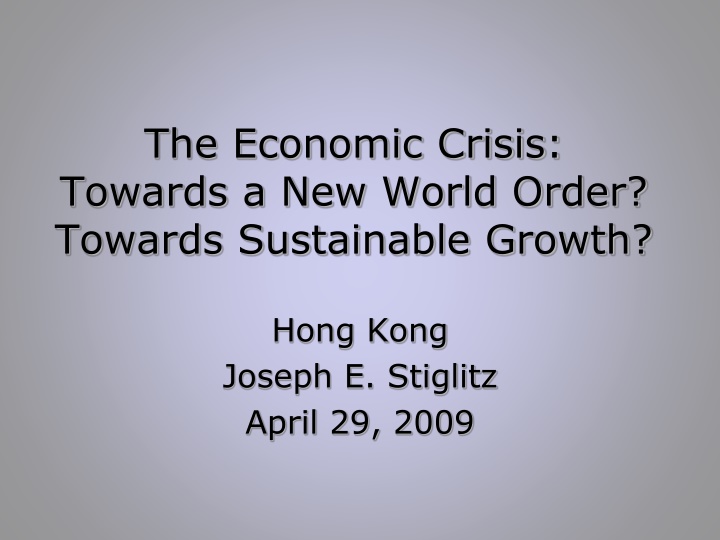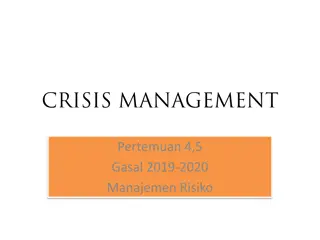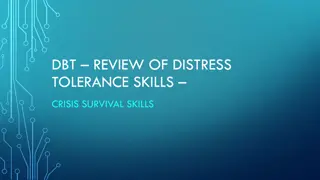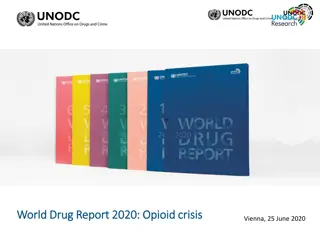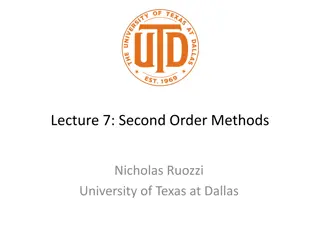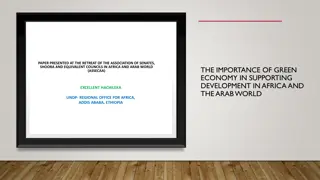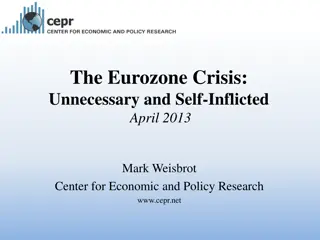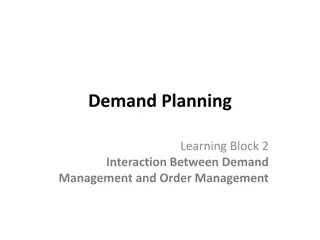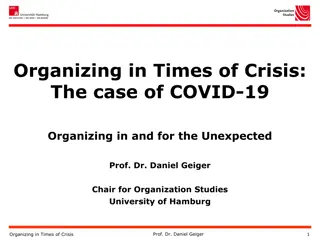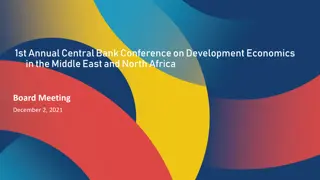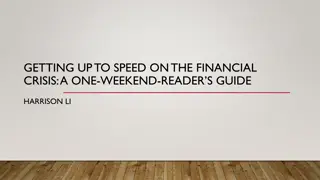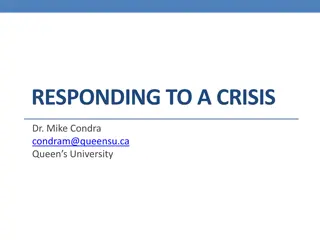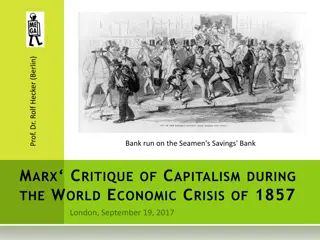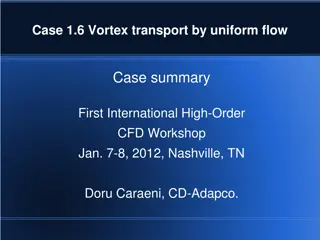The Economic Crisis: Towards a New World Order?
The world still faces challenges post-2008 economic crisis. Job recovery, regulatory reforms, and Europe's prospects are discussed, highlighting the need for global balance and solidarity funds. Insights from Joseph E. Stiglitz.
Download Presentation

Please find below an Image/Link to download the presentation.
The content on the website is provided AS IS for your information and personal use only. It may not be sold, licensed, or shared on other websites without obtaining consent from the author.If you encounter any issues during the download, it is possible that the publisher has removed the file from their server.
You are allowed to download the files provided on this website for personal or commercial use, subject to the condition that they are used lawfully. All files are the property of their respective owners.
The content on the website is provided AS IS for your information and personal use only. It may not be sold, licensed, or shared on other websites without obtaining consent from the author.
E N D
Presentation Transcript
The Economic Crisis: Towards a New World Order? Towards Sustainable Growth? Hong Kong Joseph E. Stiglitz April 29, 2009
We are not out of the Woods The world has pulled back from the brink where it was in September 2008 But the world is not yet on the course of a robust recovery In fact, prospects are that growth will slow down towards the end of the year/early next year We have not fully taken on board the lessons of the crisis Prospects of regulatory reform are better than ever But creating a new global balance will not come easily
The Unfolding Crisis The crisis has continued much as expected in the U.S. As predicted, strong growth in 3rdand 4thquarters Continued lag in job recovery Job growth in first quarter still slow (162,000) Much of it temporary (48,000 census workers) Much of it stimulus spending Average job growth for first quarter (54,000 per month) not keeping pace with new entrants to labor force but far better than losses of 753,000 per month last year Labor market remains grim Average duration of unemployment at record level Little dent in 15 million job seekers 1/6 Americans who want a full time job still can t get one Expectation of unemployment remaining in excess of 9% for next year Will be middle of decade or later before unemployment returns to normal
Europes Prospects Worse High unemployment Large budgetary deficits Speculative attacks Attack on Greece, potentially other European countries No real foundations European countries can meet debt obligations (so long as interest rates remain reasonable) Europe responded but too slowly and inadequately No institutional response Problem recognized at the founding of the euro but nothing was done Need solidarity funds, not just for new entrants but also for stability America is a single currency area but has a fiscal framework Europe does not Potential problems down the road Consequence: budgetary cutbacks Likely to weaken economies
OECD Fiscal Balance Source: OECD, Economic OutlookNo. 86, 19 November 2009
Towards a double dip in US: sources of anxiety(1) beyond weak labor market 1. Premature cutback in fiscal stimulus 2. Fiscal stringency in states/local government 3. Exit from unusual monetary measures Fed has been buying all mortgages 4. Continuing residential foreclosures Administration admits previous programs haven t worked Haven t dealt with mortgages underwater Likely to keep consumer spending depressed, contribute to bank weaknesses
Towards a double dip: sources of anxiety (2) 5. Unfolding problem in commercial real estate 6. Record level of bank closings Tip of iceberg: shows weaknesses in banking system 7. Small- and medium-sized enterprises can t get access to credit Banks constrained both by supervisors and balance sheet Borrowers constrained by lack of collateral (decrease in real estate values) 8. Weakening euro and Europe makes export prospects bleaker
Bank Lending Collapse (2) Source: OECD, Economic OutlookNo. 86, 19 November 2009
New Elements in U.S. Growing concern about deficits Obama talking about freezing discretionary spending (other than military) Motivated by worries about debt/GDP ratio reaching 90% or more by end of decade Should encourage focus on high-return investment spending which would lower long- term debt Likelyto lead to curtailing government spending before robust recovery Health care reform s economic impact remains uncertain Doing nothing cast a pallor of uncertainty But job impact remains debated
Fundamental Problem What had sustained world before crisis was real estate bubble Led to consumption levels that were not sustainable Even if banking system were working perfectly, there would be a problem But financial system is not working well in many countries
Hope of a Short-Lived Downturn Once banking system was repaired private sector would recover Only temporary help would be required But downturn was deeper than they expected
Global Perspective Mismanagement of 1997/98 East Asia crisis led to reserve accumulation savings Weakening global aggregate demand Problem worse now: those countries that had large reserves did better Growing inequality within most countries also weakening global aggregate demand Nothing is being done about these global problems
Two High Points 1. Recovery in most of Asia has been strong (and stronger than expected) China: 8.7% annual GDP growth in 2009 India: 5.6% annual GDP growth in 2009 But Japan s growth dropped 4 percentage points to -5.3% World growth fell nearly four percentage points from 2008 to 2009; India and China slowed by less than two percentage points
2. International trade is recovering Source: OECD, Economic OutlookNo. 86, 19 November 2009
IMF Forecasts Global growth expected to resume in 2010, across all economies Latest projections (January 2010) are more positive than October 2009 assessments
IMF projections: Output Growth, Year-on-Year Source: IMF WEO Update, 26 January 2010
2010 Growth Projections, Revised 12 10 8 6 4 Jan '10 revision Oct '09 projection 2 0 World US Euro area Japan UK China India Source: IMF WEO Update, 26 January 2010
IMF Projections: Output Growth, Q4 over Q4 Source: IMF WEO Update, 26 January 2010
Causes of Crisis and Regulatory Reform Plenty of blame to go around Financial sector at center Failed to perform central roles Managing risk Allocating capital (providing credit to where it had highest returns) Running an efficient payment mechanism All at low cost
Peeling Back Onion But why did financial sector fail? Inadequate/distorted incentives Organizational (too big to fail) Individual Throughout the sector rating agencies Need to explain distorted incentives Corporate governance Failure of investors to understand risk
But Regulators Failed Too Regulation had worked Made wrong inference from success Stripped it away Appointed regulators who didn t believe in regulation Need to explain why
Explaining Failure of Regulation Politics special interests Campaign contributions Lobbyists Revolving door Economic theory Some argued that markets were self- correcting, efficient Adam Smith s Invisible Hand
Irony: at very time that deregulation movement was gaining strength, good economic theory was explaining why markets often didn t work Adam Smith s invisible hand often seems invisible because it s not there We should have known that from Great Depression Greenspan Put led to superbubble economy kept going only because of repeated interventions
Prospects of Regulatory Reform Rapidly Improving As more misdeeds of the financial sector come to light Lehman Brothers deceptive accounting Goldman Sachs helping Greece engage in deceptive accounting through derivatives Selling short products that they created Fraud charge against Goldman Speculative attacks in Europe
Pillars of Regulatory Reform Transparency Incentives Structure Behavior Products In many ways, things today are worse than they were before the crisis
Transparency Mistake to move away from mark to market accounting best available information Problem is with how the information is used by regulators
Incentives One thing economists agree on: incentives matter Need to restrict incentives that lead to short-sighted behavior and excessive risk taking Need to provide incentives for banks to lend Need to change structure too big to fail provides bad incentives
Structure Need to do something about too big to fail, too big to be resolved, too intertwined to fail institutions Banks have incentives to become too big to fail, too intertwined to fail These banks have competitive advantage from implicit subsidy big distortion Break up banks little evidence of economies of scale or scope Tax in order to level playing field Regulation, restrict excessively risky behavior Higher capital adequacy standards NO derivatives Huge cost of AIG bailout Volcker Rule reduced scope for conflicts of interest added benefit
Behavior and Products Restrict leverage countercyclical macro-economic prudential regulation Restrict usury, predatory lending Suitability and fiduciary standards Restrict naked derivatives
What will Probably Get Done Consumer protection (Financial Product Safety Commission) Some form of systemic regulation Higher leverage requirements Some derivatives reform (reversing 2000 law) encouraging move to clearing houses/exchange traded Higher margin requirement Increased resolution authority and a fund for resolution
What May Get Done Not allowing government insured/subsidized institutions to issue derivatives Forcing derivatives to be traded through clearing houses/exchanges Some further restrictions on the too big to fail banks (proprietary trading?) Some taxes on financial institutions Some reform in incentive pay and in corporate governance ( say in pay )
What Probably Will Not Happen Making sure that banks don t get too big to fail Restricting size and activities Or imposing taxes and requirements to take away their competitive advantage from implicit government subsidy A financial transactions tax or other strong financial sector levy Reforms in the governance of the Federal Reserve System (lack of democratic accountability) Strong reform of incentives Strong reform in accounting
Questions on Horizon: Towards a New Global Order 1. Can China s (or India s) growth be basis of global recovery? Unlikely: too small a share of global economy 2. Can China s (or India s) growth be sustained without an American/European recovery? Possible: these countries have vast untapped domestic demand But China has not yet succeeded in reforming its growth model Key issue in discussions on 12th five year plan Failed to increase savings rate in 11th five year plan
Questions on Horizon 3. How worried do we have to be about inflation? In short run, deflation is more immediate issue China s huge demands for resources (like steel) may lead to some cost-push inflation Inflationary expectations (e.g. worry about long-term demand for funds from huge deficits) may drive up long-term interest rates, dampen economy Fed s ability to manage process questionable With potential new Obama appointees, Fed is likely to be somewhat more focused on employment
OECD Inflation Forecast Source: OECD, Economic OutlookNo. 86, 19 November 2009
Questions on Horizon 4. How worried do we need to be about global imbalances? Did not cause last crisis But could cause next Remain large G-20 proposals not likely to be effective Should not be encouraging China to consume more world cannot survive if everyone consumes at America s profligate level What is needed is more investment Retrofitting for global warming, helping address global poverty Key challenge: recycling savings Financial Sector failed
Global Imbalances Source: IMF, WEO, October 2009, Figure 1.13 Notes: DEU + JPN: Germany and Japan; OCADC: Bulgaria, Croatia, Czech Republic, Estonia, Greece, Hungary, Ireland, Latvia, Lithuania, Poland, Portugal, Romania, Slovak Republic, Slovenia, Spain, Turkey, United Kingdom; CHN+EMA: China, Hong Kong SAR, Indonesia, Korea, Malaysia, Philippines, Singapore, Taiwan Province of China, and Thailand; OIL: Oil exporters; ROW: Rest of the world.
Questions on Horizon 5. How worried do we need to be about trade tensions? Marked tensions between China and US over exchange rate Not real economic issue: adjusting exchange rate will not have significant effect on US multilateral trade deficit Tensions not a surprise Given limitations of fiscal and monetary policy, protectionism last resort Tensions likely to rise if high unemployment persists Continuing worry
A New Global Order? Crisis showed the interdependency of the world And the inadequacy of the global institutions to meet these challenges Both the short-run challenges and the long Macro-coordination Regulatory coordination
Towards a New Global Reserve System? The dollar-based reserve system is already fraying Confidence in the dollar as a good store of value eroding Part of instability of global financial system UN Commission recommendation for creation of a new global reserve system receiving widespread support More equitable, more stable, stronger global aggregate demand Keynes argued for it: an old idea whose time has come?
Towards a New Global Reserve System? Risk is that the world will gravitate towards a two, three, or four currency system Could be more unstable than the current one
Global Regulatory Coordination Comprehensive regulation desirable to avoid regulatory arbitrage But global coordination often an excuse for doing nothing Each country has responsibility for protecting its citizens and its economy Regulate first, harmonize later
Long-Run Problems While the crisis has persisted, long run problems have continued (aging of population, global warming) But the resources available to deal with them have diminished Successful Copenhagen Climate Change Conference could have helped us address global economic problem new investment for retrofitting the global economy to deal with global warming Instead, new uncertainties about the way forward may have an adverse effect Meanwhile, risks of global warming continue
G-20 Not an Adequate Institutional Response Lacks representativeness, legitimacy 172 countries not represented Should be strengthening existing global institutions UN Commission recommendation Global Economic Coordinating Council
The Crisis and the New Global Economic Order The global economic order was changing before the crisis shifting in the relative strength of emerging markets, the source of global economic growth The crisis has exposed flaws in the old order, in the global system, in the model underlying American capitalism, and has given new confidence to the new players This will accelerate change
Overview We have pulled back from the brink But the world faces enormous uncertainties Most likely prospect remains a Europe and U.S. mired in a slow and unsteady recovery Asia will do better A new global economic order will emerge But the creation of this order may not be a smooth or orderly process
